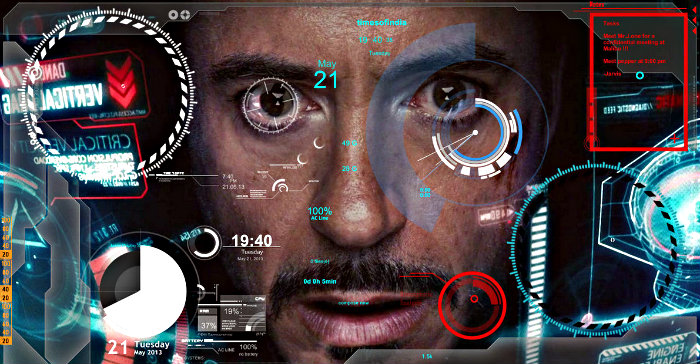
post
September 23, 2015
If You Had Your Own J.A.R.V.I.S.: What Artificial Intelligence In Business Might Be Like
What’s the coolest part of the Iron Man movies? The elaborate fight scenes? The dream team-ups? Tony Stark’s acerbic wit?
At OneReach, some of us think the coolest part of the Iron Man movies is the artificial intelligence that helps power Tony Stark’s armor and business operations. That’s right—we’re talking about J.A.R.V.I.S., Tony’s occasionally sassy but always helpful personal assistant/user interface.

Virtual assistant services like Magic and GoButler already exist, but requests are all managed by real people on the other end. And while there are services like My Second that incorporate artificial intelligence into their service offering, there’s nothing on the level of J.A.R.V.I.S.
Yet.
Siri is probably the most ubiquitous example of artificially intelligent personal assistant, but she’s more of a recommendation engine than true AI. Similarly, Echo, Amazon’s sparkling new home automation assistant, can only respond to simple voice commands. However, Echo’s functionality is beefed up once you add in the fact that Echo can connect to other apps to access their capabilities.
But what happens when AI technology reaches the realms of sci-fi? It won’t just slightly change how we do things—it’ll dramatically transform the way we live and work.
Artificial Intelligence in Daily Life
Having a digital personal assistant would make life so much easier. Small tasks would get taken care of without a thought, and big tasks would be aided with insightful input. We already connect to the Internet, but AI would integrate it into our daily lives.
For example, let’s say you have an AI like Echo that connects not just to other apps, but to the Internet of Things. After you go for a run, your FitBit would connect to your AI with your exercise statistics. You could then ask Echo what you should have for breakfast, and, after connecting to your smart fridge to see what food is available and reviewing your exercise statistics, would suggest an egg white omelet with tomatoes and mushrooms.
And, just like in the video, an AI digital assistant would make search queries easier than ever. AIs today can only answer simple search queries (ie “Find a restaurant near me”) but in the future, through the use of Natural Language Understanding (NLU) and other technologies, they’ll be able to answer complex, contextual questions. In fact, IBM Watson is already on its way there.
Artificial Intelligence in Business
Watson and Echo may not have J.A.R.V.I.S-level intelligence yet, but companies can still utilize AI technology in a meaningful way. In fact, companies are already using AI in the form of automation for call routing, automated replies, personalization, and more.
While humans can sometimes be biased and limited by their own knowledge, AI could compensate for human limitations by doing something that many of us can’t: taking a huge amount of information, analyzing it, and boiling it down to a few different options – quickly.

But let’s put it into practice. For example, let’s say you added Echo’s capabilities to your call center tomorrow. If people text in and 80% of them select option 5, AIs like Echo can shift option 5 to the first option to better meet customer needs. AIs can also provide canned responses to agents so that they can not only respond to customer questions quickly, but also track agent-customer interactions.
Alternatively, if 80% of customers are calling in about outages, AI can pretty accurately guess what customers are calling in for. It can analyze input and responses quickly, then learn from that for future interactions.
But what would AI look like on J.A.R.V.I.S.’s level?
AI would be able to pull customer information up in an instant, review past interactions, and determine that you’re probably calling because your printer’s lifetime warranty has expired and it’s no longer working. If that wasn’t the correct response, the AI digital assistant would observe and learn from agent interactions over a series of calls and track probable causes or anticipate trends. For example, if five people call about a broken printer, the AI could inform the agent that that’s what calls are most likely about and what the broken part is.
Despite all that AI is capable of, there will always be a need for human interaction, because some customers will prefer it. And while AI is very good at repeating information, there’s nothing like a human touch to get someone through a difficult conversation (although some people might prefer AI).
Conclusion
AI is a powerfully transformative tool that will be responsible for changing our personal and professional lives. It’s a somewhat frightening proposition, almost too fathom.
Luckily, we’ve got something to explain it to us.

To learn more about providing a great, automated customer experience across channels, download our whitepaper here.
Header image, Gif 1, Gif 2 and Gif 3 credit.
Stay up to date
Latest Articles




